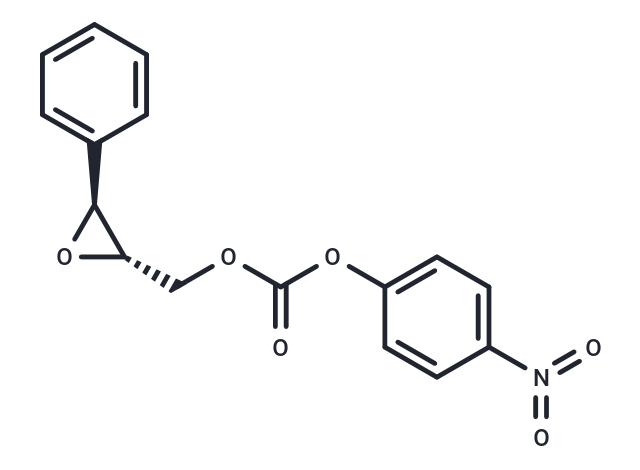 Your shopping cart is currently empty
Your shopping cart is currently empty

Cytochrome P450 metabolites of arachidonic acid, such as 11(12)-EpETrE and 14(15)-EpETrE have been identified as endothelium derived hyperpolarizing factors with vasodilator activity. Soluble epoxide hydrolase (sEH) catalyzes the conversion of EpETrEs to the corresponding DiHETrEs thereby diminishing their activity. Inhibitors of sEH may therefore have clinical utility for treating hypertension and systemic inflammation. S-NEPC is a colorimetric substrate used to measure sEH activity. It also is a substrate for Glutathione S-transferase, microsomal epoxide hydrolase and porcine liver carboxylesterase. Hydrolysis of S-NEPC by sEH yields 4-nitrophenol which can be quantified spectrophotometrically at 405 nm. S-NEPC is adaptable for use in 96-well microwell plate readers.

| Pack Size | Price | USA Warehouse | Global Warehouse | Quantity |
|---|---|---|---|---|
| 1 mg | $69 | 35 days | 35 days | |
| 5 mg | $297 | 35 days | 35 days | |
| 10 mg | $529 | 35 days | 35 days | |
| 25 mg | $1,130 | 35 days | 35 days |
| Description | Cytochrome P450 metabolites of arachidonic acid, such as 11(12)-EpETrE and 14(15)-EpETrE have been identified as endothelium derived hyperpolarizing factors with vasodilator activity. Soluble epoxide hydrolase (sEH) catalyzes the conversion of EpETrEs to the corresponding DiHETrEs thereby diminishing their activity. Inhibitors of sEH may therefore have clinical utility for treating hypertension and systemic inflammation. S-NEPC is a colorimetric substrate used to measure sEH activity. It also is a substrate for Glutathione S-transferase, microsomal epoxide hydrolase and porcine liver carboxylesterase. Hydrolysis of S-NEPC by sEH yields 4-nitrophenol which can be quantified spectrophotometrically at 405 nm. S-NEPC is adaptable for use in 96-well microwell plate readers. |
| Molecular Weight | 315.281 |
| Formula | C16H13NO6 |
| Cas No. | 147349-28-8 |
| Smiles | O=C(OC[C@@H]1O[C@H]1c1ccccc1)Oc1ccc(cc1)N(=O)=O |
| Storage | Powder: -20°C for 3 years | In solvent: -80°C for 1 year | Shipping with blue ice/Shipping at ambient temperature. |
| Solubility Information | DMSO: 30 mg/mL (95.15 mM), Sonication is recommended. DMSO:PBS (pH 7.2) (1:2): 0.15 mg/mL (0.48 mM), Sonication is recommended. Ethanol: 2 mg/mL (6.34 mM), Sonication is recommended. DMF: 30 mg/mL (95.15 mM), Sonication is recommended. |
| Size | Quantity | Unit Price | Amount | Operation |
|---|

Copyright © 2015-2026 TargetMol Chemicals Inc. All Rights Reserved.